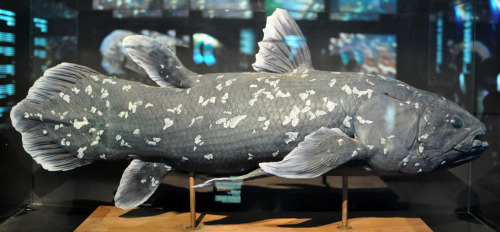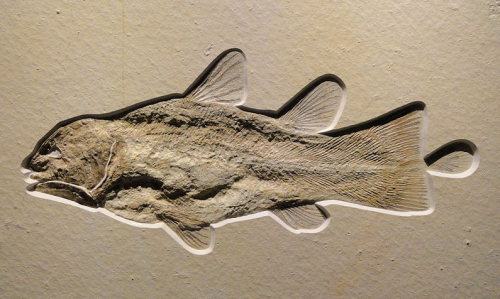(Weird) Fish of the Day: CoelacanthAt 1.7 metres in length and covered in thick, armour-like scales,
(Weird) Fish of the Day: CoelacanthAt 1.7 metres in length and covered in thick, armour-like scales, the coelacanth is one weird kettle of fish. They were once thought to have gone extinct 66 million years ago, in the extinction that wiped out the dinosaurs at the end of the Cretaceous period. Their fossil records date back from 80 to 360 million years ago, so it seemed safe to assume that they’d disappeared - but in 1938, a museum curator in South Africa got a call from a local fisherman who’d hauled up something head-scratchingly weird. The curator, Marjorie Courtenay-Latimer, immediately knew this enormous fish was something special, and an ichthyologist soon confirmed: this was a coelacanth.This first live specimen was found in the Comoro Islands between Madagascar and Mozambique. In 1997 a second species of coelacanth was discovered thousands of kilometres away in Indonesia, when a honeymooning marine biologist stumbled across one in a market. Turns out they’ve been hanging around all these years without anyone taking much notice of them, but now we know they’re not all dead, scientists have been paying a fair bit of attention to them. See, like all weird-looking things, they’re also incredibly interesting.Coelacanths, while technically fish, aren’t actually very closely related to other modern fish. In fact, their closer relatives include the lungfish, reptiles, and mammals. They have a whole host of odd features, including an electroreceptive organ on their snout, a hollow, spine filled with liquid, a hinge on their skull that allows them to open their mouths extremely wide, and a defunct lung in their abdomen that they probably used to breathe millions of years ago, before they adapted to using gills to extract oxygen from water like other modern fish.Coelacanths also have a bunch of anatomical features that are associated with early vertebrates. Their fins aren’t like those of other fishes at all. Instead, they have four limb-like fins that are supported internally by bones, and these fins move in an alternating pattern a bit like a four-limbed vertebrate walking on land. They also don’t lay eggs like other fish do - they give birth to live young.Though the coelacanths we find and study today have evolved in the past few hundred million years, they’ve retained so many relics from early vertebrate evolution that they provide a unique view into the past. They continue to be a important link in understanding how our distant ancestors made the evolutionary transition up out of the ocean and onto land.Image Credit: Wikimedia Commons -- source link
Tumblr Blog : sciencesoup.tumblr.com
#science#coelacanths#marine biology#biology#evolution

